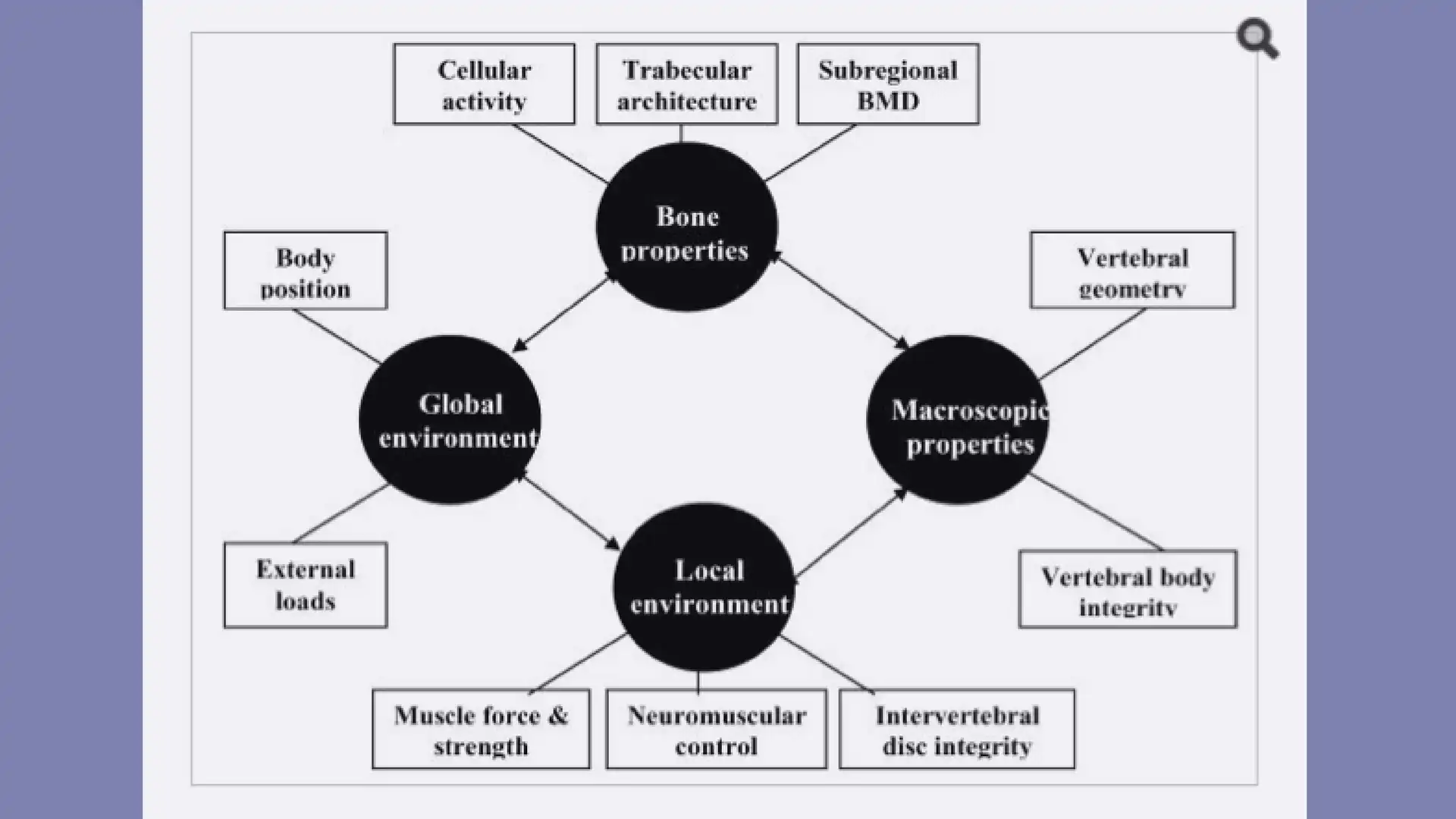Yoga for Osteoporosis: Reduce the Risk of Vertebral Fragility Fractures: Intersegmental Stability & Neuromuscular Coordination

The spine is essentially a set of loosely assembled building blocks stacked on top of each other. What keeps the spine stable and able to move efficiently are the ligaments, fascia and muscles around the spine as well as the muscles around the trunk.
To maintain intersegmental stability (i.e. the stability and balance between each vertebral segment) and spinal articulation (i.e. ability for fine and efficient movement in many different directions), a high level of neuromuscular control is necessary.
If we lose the ability to maintain controlled movement and stability in the low back and thoracic spine, it can lead to biomechanical overload. This, in turn may trigger local microtrauma in already weakened osteoporotic vertebrae, in turn making the vertebrae more vulnerable to fracture if challenged down the road.
Instability of the trunk in particular may also lead to compensatory movement patterns, which further reduces neuromuscular control of the trunk and spine and could perpetuate local microtrauma in the vertebrae.
Take-away Lesson. According to the Cleveland Clinic, strong abdominal and back muscles are important to ensure stability and optimal movement of the spine. In addition, a high level of neuromuscular control is key to ensuring that the stabilizing muscles of the trunk are recruited efficiently by the central nervous system.
Research has particularly focused on the role of the transverse abdominus (TA) and the multifidus muscles in loss of spinal integrity and stability. Both the TA and the multifidi are important spine and trunk stabilizers during movement, multiple studies show.
Consequently, a weakened or dysfunctional TA will lead to suboptimal control of the spine during movement and higher risk of microtrauma that might predispose the vertebrae to fractures. In short, exercises that keep the transverse abdominus and multifidus muscles strong will help increase intersegmental stability.
Creating stronger deep core muscles isn’t enough, however. The muscles of the core cylinder must also stay intelligent, i.e. able to respond efficiently to movement. In this respect, yoga postures that provide both a strength challenge to the spine and also create greater neuromuscular coordination via movement challenges, may be helpful. Modified variations of poses like Triangle Pose, Side Angle Pose, and Reverse Triangle Pose may be especially beneficial.



